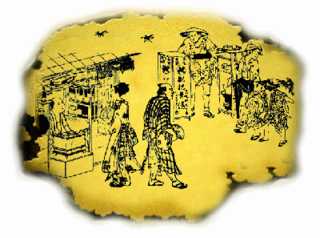|

Beekeeping started very early in Europe. Ancient Egyptians were engaged in organized beekeeping in 2,500 B.C. In China, beekeeping was recorded in the 2nd century, and several farmers specialized in beekeeping in some farm villages in the 13th century, however the history of the business was still behind Europe.
Japan, whose cultural development was highly dependent on China, also started beekeeping late. The oldest record says Yoho, a prince of Kudara (ancient Korea), released a beehive on Mount Miwa, Nara Prefecture, an experiment which ended in failure. Other sources say this was not for the purpose of beekeeping but for fortune-telling which this foreigner in exile had performed by using bees. (Watanabe, Takashi. 1974).
In Japan, honey was treated as precious medicine since the old times. By the end of the 9th century, honey was presented as an offering to the Emperor from all over the nation. During the latter half of the 12th century, beekeeping started in Japan and became popular in the Edo Era. In those days, people believed a "king bee", not a " queen bee", ruled the swarm. In the light of that knowledge about bees was far behind Spain where, in 1586, a researcher found that queen bees lay eggs.
However, the Japanese in the Edo Era had an advantage over Europeans in honey-gathering skills. Europeans burned sulfur to kill all the bees in the hive so they could get to the honey. In Japan, the following method was taken: "Knock lightly on the lid of the hive box to chase the bees deep inside the hive. Then cut away two thirds of the hive and leave the bottom as it is so that bees can restore the hive. This is how honey can be gathered from the same hive again and again." This method, slightly more humanitarian than the European manner, was introduced in "Nihon Sankai Meisan Zukai (An Illustrated Book on Special Products from All Lands and Seas of Japan)" in 1799.
|

![]()

